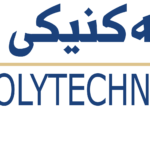- Mohammed Rashad Ibrahim
- [email protected]
- 0750 430 9726
-
ABSTRACT
The reason for using composite materials across a variety of sectors is their light
density and consequently, this study's goal is to enhance the mechanical and
physical properties of polymer composite materials. To do this, two types of
polymer epoxy resin used as a matrix and reinforced with various fibers, including
mica and pinecone fiber as natural and glass fiber as synthetic fibers. Each fiber
added to the strength of epoxy resin by 15%, and creating hybrid composite by
combing mica and glass fibers; also glass and pinecone fibers at different wt%
(10:5, 7.5:7.5, and 5:10). Mica and pinecone fiber were also combined at wt%
(7.5:7.5). Due to mica fiber being used here to reinforce polymer composites for the
first time so three different forms (long fiber, powder and particle form) are used
and compared the results. Pinecone fiber used previously but no one mixed it with
glass fiber and these types of epoxy. Each sample was created using the hand lay-up
approach. The bulk density has been measured as a physical property, and
mechanical properties (tensile strength, flexural strength, and impact energy) have
all been carried out in accordance with ASTM standards.
Composite materials reinforced by glass and mica fiber in long fiber unidirectional
form were utilized. Noticing that mica fiber had a role in lowering bulk density to
2.76% for sikadur epoxy and 1.93% for master brace epoxy. Nevertheless, glass
fiber increased bulk density. Both fibers enhanced mechanical properties; however,
glass fiber has a bigger influence rather than mica fiber, even though mica fiber
may also provide improvements from 26% to 67% to each of them.
Also composite materials reinforced by unidirectional glass fiber and pinecone
fibers as reinforcement uses while using powdered pinecone. Pinecones
significantly impact reducing bulk density; for example, both epoxy had decreases
of 6.947% and 4.3%, respectively. In terms of mechanical properties pinecone fiber
had a decline effect, it saw a 5-26% decrease in the tensile and flexural strengths, 39-51% for impact energy, and however, when coupled with glass fiber, it had
positive results.
Using mica as (long fiber, particle, and powder), all enhanced bulk density by 2-
4%, but the effect was greatest when pinecone was added. In terms of tensile and
flexural strength, all of them improved by 10–60%, but the long fiber show greater
effect. However, impact energy increased by 26–50%, the powder form achieved
more value, but when mixed with pinecone, the impact energy decreased roughly 25
to 30 % comparing with the neat epoxy
- Erbil Technical Engineering College
- Mechanical and energy department
- Material sciences


